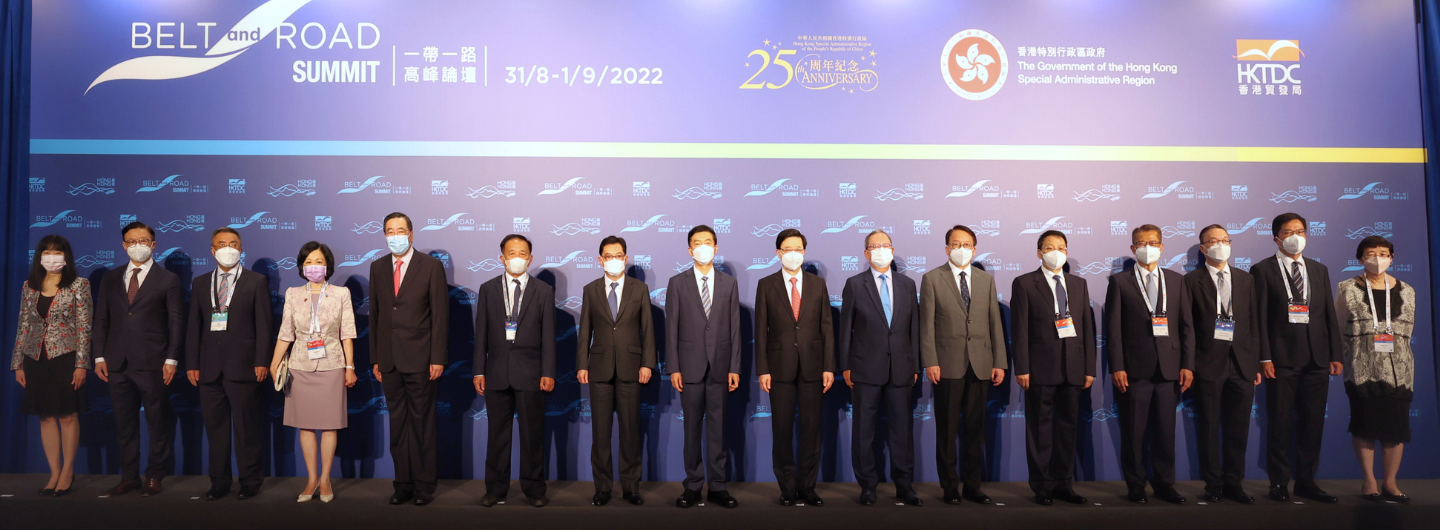DPM Heng Swee Keat at the 7th Belt and Road Summit Policy Dialogue Hong Kong
DPM Heng Swee Keat
Economy
Foreign affairs
31 August 2022
Remarks by Deputy Prime Minister and Coordinating Minister for Economic Policies Heng Swee Keat at the 7th Belt and Road Summit Policy Dialogue, Hong Kong on 31 August 2022.
This article has been migrated from an earlier version of the site and may display formatting inconsistencies.

Thank you for inviting me to speak at this Policy Dialogue.
Asia’s growth over the past few decades has been remarkable. COVID-19 has been a major speed bump. There are more bumps ahead – geo-political tensions, climate crisis, and more. But Asia’s fundamentals remain sound, with significant untapped potential.
The theme of this dialogue is most appropriate. To unlock Asia’s potential and improve the lives of its people, we must drive growth through innovation and collaboration.
The Belt and Road Initiative, or BRI, is one such timely partnership that is focused on inclusiveness and global infrastructure development. More than 140 countries are involved, and over US$200 billion have been invested.
The question is – how do we further strengthen collaboration and innovation? Let me make four points. Since we are discussing the BRI this morning, my first three points will be around this acronym.
Bankability
The first is B, bankability. Projects must be well designed with robust business models, good financial models and good governance. Bankability will allow us to crowd in capital depending on the nature of the projects, governments, Multilateral Development Banks, and private capital can take on different risk and return profiles by ensuring bankability, projects can generate sustained benefits for the community, economy and investors.
As a financial centre, Singapore has been playing a constructive role – With a full suite of professional services offerings, and a good ecosystem of infrastructure players. We have also strengthened our mechanisms for international commercial dispute resolution, including arbitration and mediation. Both the World Bank and the Asian Development Bank have operations in Singapore, bringing together public and private entities to support development
Through Infrastructure Asia, Singapore is taking this one step up further by co creating infrastructure solutions for the region, promoting collaboration in third countries, and bringing together stakeholders to create a better future.
Responsibility
Second, is R, responsibility. More precisely, environmental responsibility. The climate crisis has become more urgent. Infrastructure projects must be sustainable. As infrastructure projects last many years, it is important that these projects are sustainable at the outset. The Belt and Road International Green Development Coalition is pulling together expertise and data on the region’s green transition. As co-chairs, Singapore and China will continue to work with our partners on environmentally responsible development along the Belt and Road. Beyond infrastructure, there are many opportunities for collaboration from developing and scaling clean energy and decarbonisation solutions, to investing in nature-based solutions for carbon sequestration, and promoting carbon exchanges to spur green investments. We must continue to do all that we can to address the climate crisis.
Interconnectedness
Let me touch on the third point, I, or interconnectedness. Beyond physical infrastructure development, we also need to develop our soft infrastructure – including connectivity. Connectivity underpins the modern economy. It is significant that ASEAN and like-minded partners, including China, came together to form the world’s largest trade agreement – RCEP. CE John Lee talked about Hong Kong’s application to join the RCEP. Singapore strongly supports this. Hong Kong is an international financial, shipping and trading centre, and a key gateway for China.
Hong Kong can contribute in many ways to the vibrancy of the region.
Beyond trade connectivity, there are two other important aspects of connectivity. One, air connectivity. As the COVID-19 risks subside, I hope that flights will be fully restored. Two, digital connectivity. As the world becomes more digital, we must progress with the times, through multilateral partnerships such as the Digital Economy Partnership Agreement (DEPA), and Regional mechanisms such as the ASEAN Data Management Framework. Through these different forms of connectivity, we bring the region and the world closer together.
Stability
I have spoken about three important factors in forging partnerships – B, R, I – or bankability, responsibility, and interconnectedness. But there is a fourth point. For all of this to happen, we need stability. Better infrastructure and a more integrated region are predicated upon stability. We have enjoyed many decades of stability in the region, with ASEAN playing an important role. But tensions have mounted in recent years. Situations around flashpoints – including the Taiwan Strait, South China Sea, Korean Peninsula –have at times been tense. Peace has become more brittle in Asia. No one wants war. But with intensifying strategic competition in the absence of trust, the next flare-up or miscalculation could shatter the peace. We must steer away from such a precarious future.
This requires us to take a step back. All parties can ratchet down the tensions.This means keeping the region open and inclusive, maintaining open and constructive channels for dialogue, and identifying common grounds for cooperation.
Conclusion
To conclude, the future of Asia is promising. BRI has an important role to play in realising this future. I hope we can work towards the BRI points I highlighted. Bankability, Responsibility, and Interconnectedness. So that we can work towards unlocking Asia’s significant potential and improve the lives of our peoples. We must continue to preserve the stability that has made past decades of prosperity possible.
Thank you.
Explore related topics
